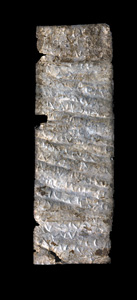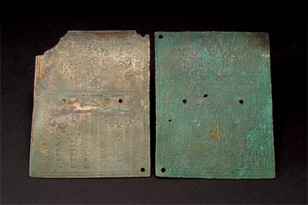Several legal systems in the ancient world used doubled (duplicated) documents to back up and to preserve important texts. Doubled, sealed, witnessed documents are found written in Akkadian (by the Babylonians), Hebrew (Israelites), and Greek and Latin (Greeks and Romans), on clay tablets, papyrus and parchment scrolls, wooden tablets, and metal plates.
The Babylonians, as early as 2000 BC, used such a system in writing legal contracts, deeds, and business transactions. Scribes wrote up the transactions in cuneiform on clay tablets, many of which are still legible. Witnesses would roll a personal seal onto the wet clay of a document before it dried. The tablet was then wrapped in an “envelope” formed by a thin sheet of clay with the text repeated on the outside clay as well. Finally, the witnesses impressed their seals on the outer portion. Only a judge or authorized party could at a later time legally remove the outer portion. This practice made forgery or alteration virtually impossible, because multiple witnesses were involved and because both tablets had to dry together to prevent the outer envelope from cracking.
Download a High Definition version of this video
(To view videos you must have Quicktime 7 installed)

Figure 5
Greek parchments found during the excavation of the fourth century BC Syrian city Dura-Europos evidence the practice of doubled legal documents written on leather. Similarly, the Israelites recorded legal documents on papyrus scrolls that were then rolled tightly and sealed, with the text being repeated on an open portion of the scroll [Figure 5]. Jewish texts prescribe in detail the way in which doubled, sealed, witnessed documents should be configured in order to qualify as valid legal records.

Figure 6
Talmudic law required three witnesses to make the document indisputable. In the case of dispute over the contents of the contract, a judge could break the seals and unroll the original document. Evidence of this practice is found in Jeremiah 32:6–16, a text that was not clearly understood until examples of such Hebrew texts were discovered at Elephantine. A papyrus scroll and other tablets have been replicated and are displayed in the exhibition, showing how clay seals and metal seal boxes were used to protect the seals attached to papyrus or parchment scrolls, or to metal or wooden documents.
Two small silver scrolls from the eastern Mediterranean further illustrate the ancient practice of writing on metal [Figure 6].
Download a High Definition version of this video
(To view videos you must have Quicktime 7 installed)






